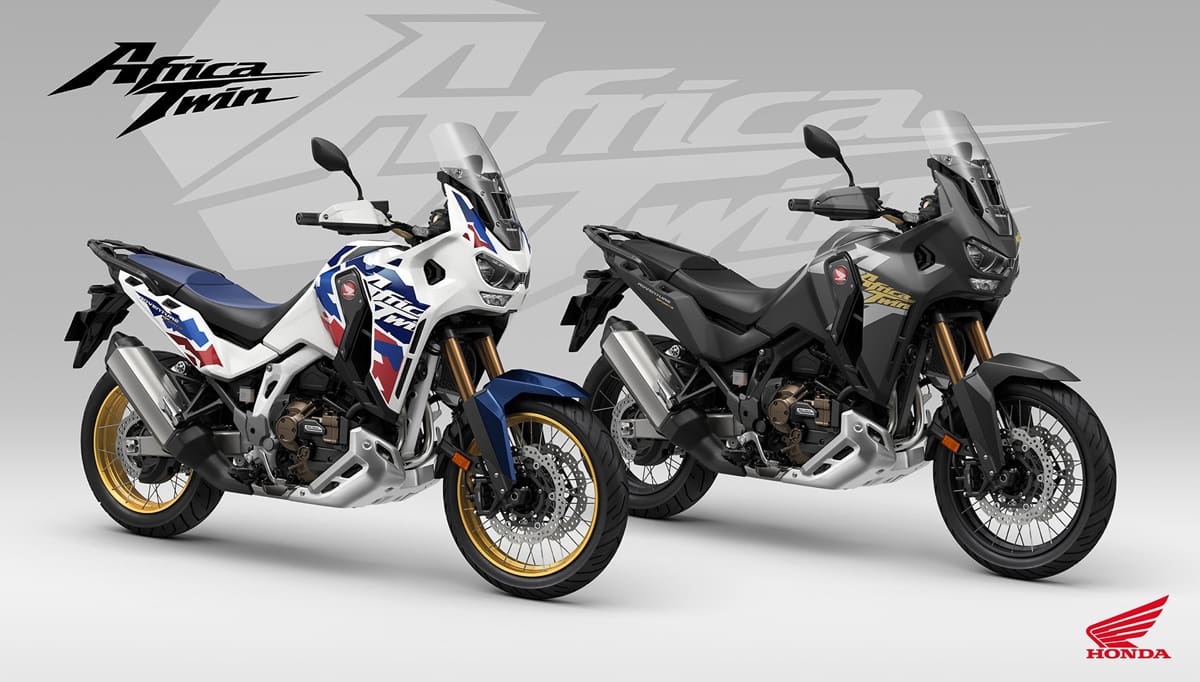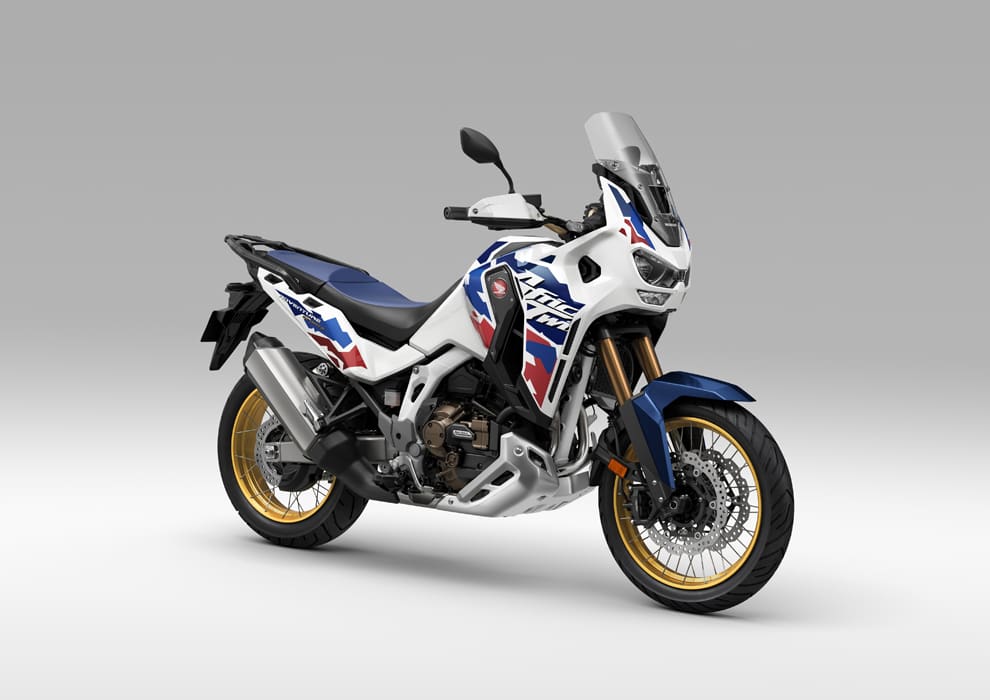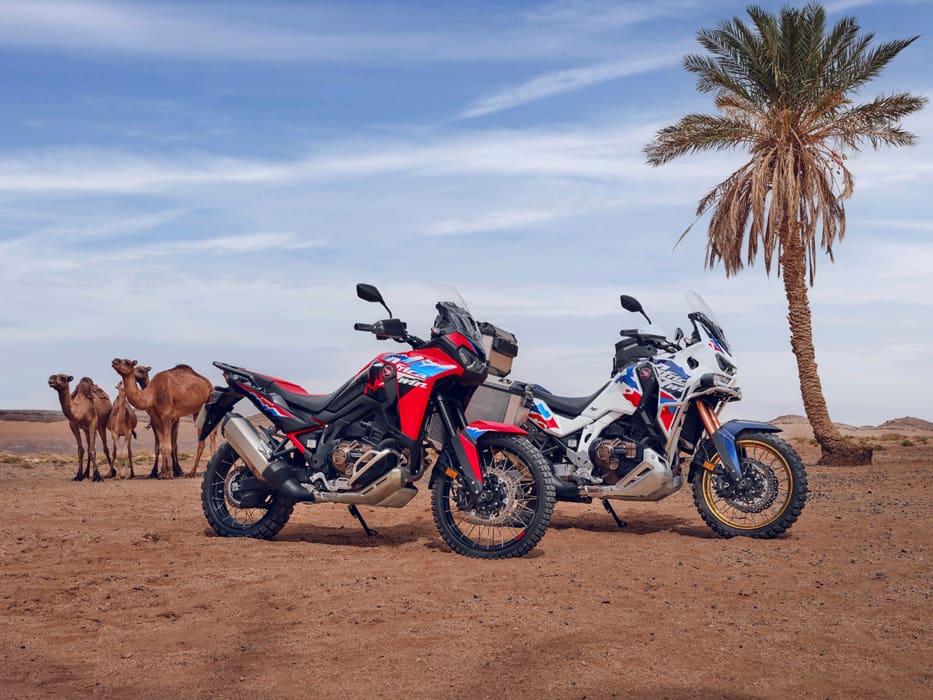Upping the compression ratio form 10.1:1 to 10.5:1, along with tweaked valve timing, intake ports and computer settings have resulted in a 7% torque boost to 112Nm, now arriving 750rpm lower in the rev range at 5,500rpm. Peak power stays at 75kW, as before, but a substantial hike in low and mid-range means the area under the power and torque curves is substantially larger than before, translating to a real-world performance improvement.

Both the Africa Twin and Africa Twin Adventure Sports have also received chassis improvements, with optional Showa EERA electronic suspension adjustment – previously offered only on the Adventure Sports model – now available on the base Africa Twin, altering damping and rear spring preload on the move. You can pick from five modes – soft, mid, hard, off-road and user-configured – via the 6.5-inch touchscreen dash. Kit including Apple CarPlay is standard.

The standard Africa Twin retains its off-road bias, with a 21-inch front wheel, but shifts to tubeless tyres for 2024. Visually, it gains a revised front-end design with a larger, 5-position adjustable screen, plus new rear bodywork. Despite multiple patents showing that Honda has been developing a radar for the Africa Twin, similar to the systems already offered by a growing number of rivals, the 2024 bike isn’t fitted with it.

Moving over to the Africa Twin Adventure Sports model, Honda has shifted its focus towards on-road use, replacing the old 21-inch front wheel with a 19-inch version and dropping the suspension by 20mm. The Showa EERA electronic suspension, previously optional, becomes standard on the Adventure Sports, and it gets its own new bodywork front and rear to further distinguish it from the base model, plus a seat that’s 15mm thicker than before to improve long-distance comfort. Like the standard Africa Twin, there’s a 5-position adjustment for the Adventure Sports’ taller screen.

As in the past, Africa Twin is offered with both manual and DCT semi-automatic transmissions, the latter adding around 10kg to the weight thanks to its complex twin-clutch design and electro-hydraulic actuators. That means the lightest variant is the base Africa Twin in manual form with passive suspension, coming in at 231kg, with the DCT version at 242kg. The EERA electronic suspension adds another 2kg when it’s specified. The Adventure Sports starts at 243kg and rises to 253kg with DCT.

Ben Purvis











